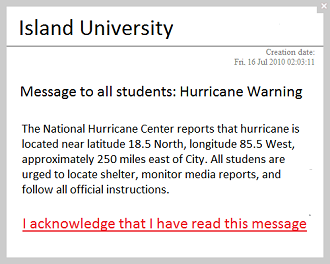Effective communication in the workplace is possibly the most important contributor to the success of any organization, but not a lot of companies take the appropriate steps to ensure the effectiveness of their communication strategies. If you want to advance your business outcomes, you must improve your communication strategies. Do you want to know how to communicate with employees and get their buy-in? Here we present eight tips:
1. Learn to spot and acknowledge problems. If you want to fix concerns at work, then you must be able to recognize issues as they happen. But because you cannot see everything that happens in your daily operations, your employees must serve as your eyes and ears. This is why it is important to let your employees know what you expect from them in terms of communication. Ensure that you set proper expectations about how you want information to be delivered and that your employees have tools necessary for communication.
2. Set SMART communication goals. The clearer your communication goals are, the higher the chances of their being met. Setting goals is part of setting your employees’ expectations with regard to communicating information with you. As the manager, you must explain these goals to your subordinates and make them understand how they can contribute to the achievement of these goals.
3. Keep your lines of communication open. Most employees are wary of opening up and being truthful to their managers or fear that they will be punished for their opinions. If the opinion is unpopular or does not agree with what management thinks, the staff will think twice, even thrice, about pointing out something negative. But this should not be the case; your employees must be able to communicate honestly with the management without fear of being judged or compromising their jobs. As a manager, you must encourage your employees to point out problems and issues and what they think can best address these issues.
4. Say no to information overload. Employees are often burdened with tasks given by their supervisors and managers. This is because leaders unwittingly demand the staff to prioritize everything and accomplish all tasks with the same efficiency and quality. This practice leaves employees in the dark; when they do not know which tasks to prioritize, they get overwhelmed. As a manager, you must take your employees’ capacity to handle tasks and information, and use this knowledge accordingly when you delegate tasks.
5. Do not limit your communication to verbal means. Yes, sometimes emails can be too much – there are just too many of them, containing more information than your employees can process. However, you need to have written communication in addition to verbal instructions, especially if what you are trying to communicate is very detailed. You can do this via email, SMS, or even handwritten notes; you may also use tools such as corporate screensavers, desktop alerts and even digital signage. To ensure that tasks and deliverables are accomplished on time, always put the time and date. This does not just give your employees a reference regarding the task, it also serves as your reference – if the project does not get completed in time, then you would know where the problem is.
6. Boost your employees’ morale and keep it high. Happy employees are productive employees. While you have no control over what happens to your staff outside of the office, you can make a big difference to their day while they are in the workplace. As much as possible, keep the employee spirits high through different initiatives, but take caution not to make the work environment too comfortable for everyone, to keep them from being complacent.
Every company is different, so there are no set directives about how to communicate with employees, and how to do it effectively. But the above-mentioned suggestions will surely help you make a difference in communicating with your staff.






